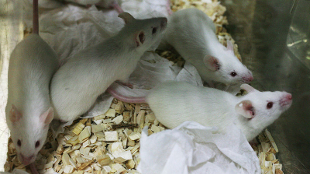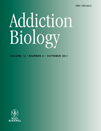
研究人员研发出一种嗜酒老鼠新模型,从而能够更好的诠释人类酗酒行为。
对于酗酒和吸毒成瘾方向的研究人员来说,他们有了一种新的研究对象——新型嗜酒老鼠。这种老鼠是Nicholas Grahame和他同事研发的,Nicholas Grahame是印地安那大学与普渡大学印第安纳波利斯联合分校心理学的副教授。这种老鼠比其他啮齿类动物更能喝酒,它们只喝酒,然后喝的伶仃大醉,这些因素导致更多老鼠喝醉。
之前的酗酒老鼠模型尽管可以拿到酒,它们还是会选择喝水。唯一能使它们彻底醉了的方法是把水拿走,或者直接给它们酒。相反,这种新型嗜酒老鼠就选择喝酒,像人类酗酒者一样,它们的血液酒精浓度达到人类法定血液酒精浓度的3倍以上——近似于重度酗酒者血液酒精浓度的水平。
Grahame 在一次新闻发布会上说,这种酗酒鼠系有助于我们更好了解酒精代谢时大脑的基本机制,也能更好了解酒精对大脑的危害,从而研发出治疗方案。
这种老鼠是经过40代选择性繁殖培育出的新种,新成果发表在上月 Addiction Biology杂志的网络版上。

Pharmacologically relevant intake during chronic, free-choice drinking rhythms in selectively bred high alcohol-preferring mice
Liana M. Matson, Nicholas J. Grahame
Multiple lines of high alcohol-preferring (HAP) mice were selectively bred for their intake of 10% ethanol (v/v) during 24-hour daily access over a 4-week period, with the highest drinking lines exhibiting intakes in excess of 20 g/kg/day. We observed circadian drinking patterns and resulting blood ethanol concentrations (BECs) in the HAP lines. We also compared the drinking rhythms and corresponding BECs of the highest drinking HAP lines to those of the C57BL/6J (B6) inbred strain. Adult male and female crossed HAP (cHAP), HAP replicate lines 1, 2, 3 and B6 mice had free-choice access to 10% ethanol and water for 3 weeks prior to bi-hourly assessments of intake throughout the dark portion of the light–dark cycle. All HAP lines reached and maintained a rate of alcohol intake above the rate at which HAP1 mice metabolize alcohol, and BECs were consistent with this finding. Further, cHAP and HAP1 mice maintained an excessive level of intake throughout the dark portion of the cycle, accumulating mean BEC levels of 261.5 ± 18.09 and 217.9 ± 25.02 mg/dl, respectively. B6 mice drank comparatively modestly, and did not accumulate high BEC levels (53.63 + 8.15 mg/dl). Free-choice drinking demonstrated by the HAP1 and cHAP lines may provide a unique opportunity for modeling the excessive intake that often occurs in alcohol-dependent individuals, and allow for exploration of predisposing factors for excessive consumption, as well as the development of physiological, behavioral and toxicological outcomes following alcohol exposure.
文献链接:https://onlinelibrary.wiley.com/doi/10.1111/j.1369-1600.2011.00412.x/abstract








